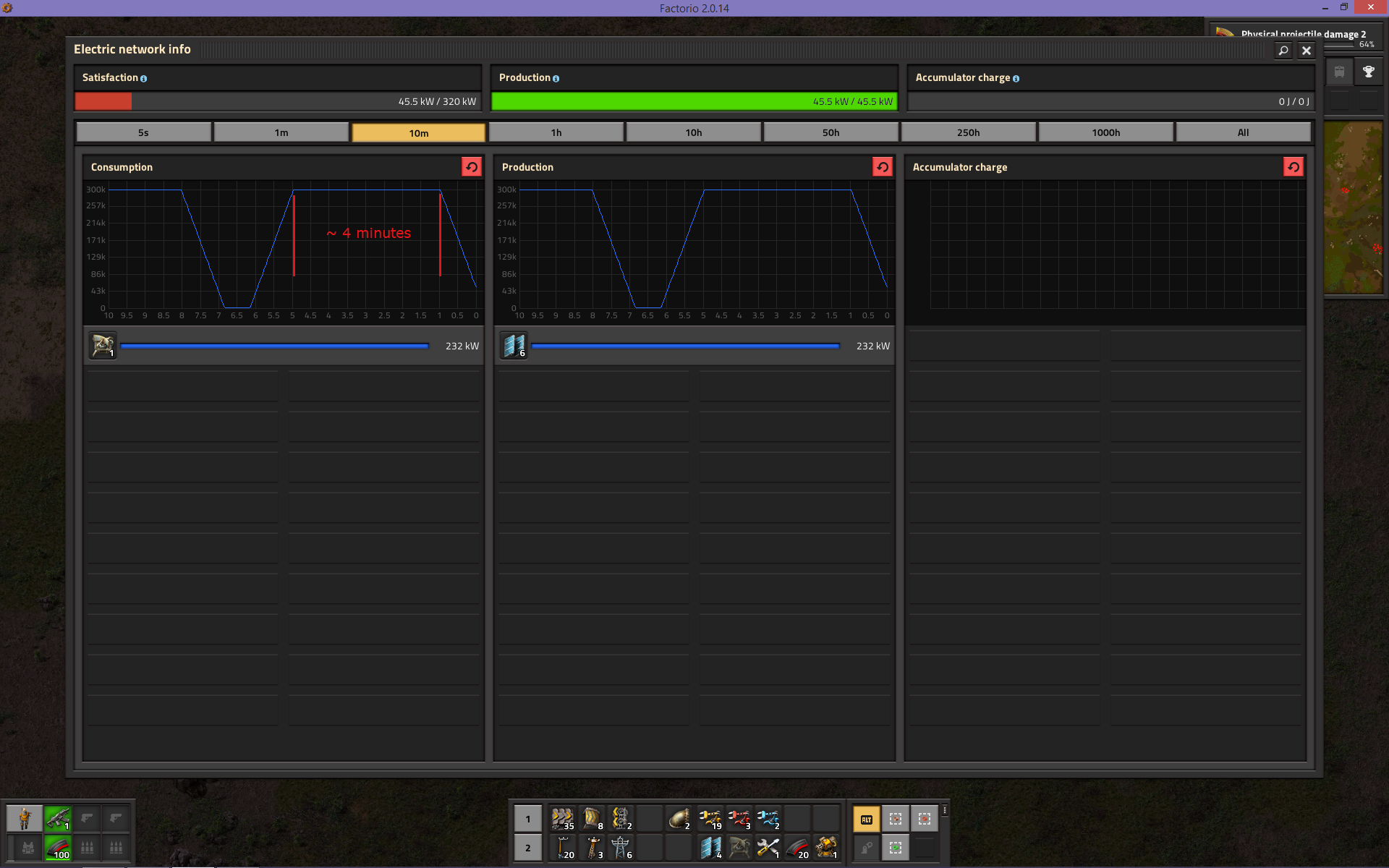Strike the prior conclusion that five solar panels fully powers a single radar.
I must have taken the prior screenshot shortly after removing the sixth solar panel.
I checked again after several day/night cycles and at 300 KW from the five solar panels the radar is not running at its full rate during full daylight.
My assumption is that the buffer mentioned by Rseding91 was still at least partially charged when I took the prior screenshot.
Further testing shows that once the buffer is discharged during the first daylight dropout following removal of the 6th solar panel the radar will once again require 320 kW and will not run at its full rate with five solar panels during full daylight.
So, six solar panels are required to run a single radar at its full rate with no other producers during full sunlight.
This image was taken after 3 minutes of full daylight (normal Nauvis has 3.5 minutes of full daylight in its 7 minute cycle).

- 11-06-2024, 10-32-41.png (5.02 MiB) Viewed 385 times
Another interesting artifact is that during full daylight the production and consumption stats for the five solar panels and the radar flicker between 300 and 301 KW when observed over a 1 minute interval.

- 11-06-2024, 09-59-20.png (987.5 KiB) Viewed 385 times
Adding a sixth solar panel also extends the portion of the 7 minute day/night cycle that the radar runs at its full rate to approximately 4 minutes.

- 11-06-2024, 11-29-39.png (1021.66 KiB) Viewed 385 times
All in all this is a small issue.
I also checked this is vanilla 1.1.109 and it behaves the same way. So it is not new to 2.0.
Prior to the availability of accumulators the radar will drop out in the absence of daylight anyway.
I've added this additional information to correct my prior conclusion for anyone that may be interested in this nuance.